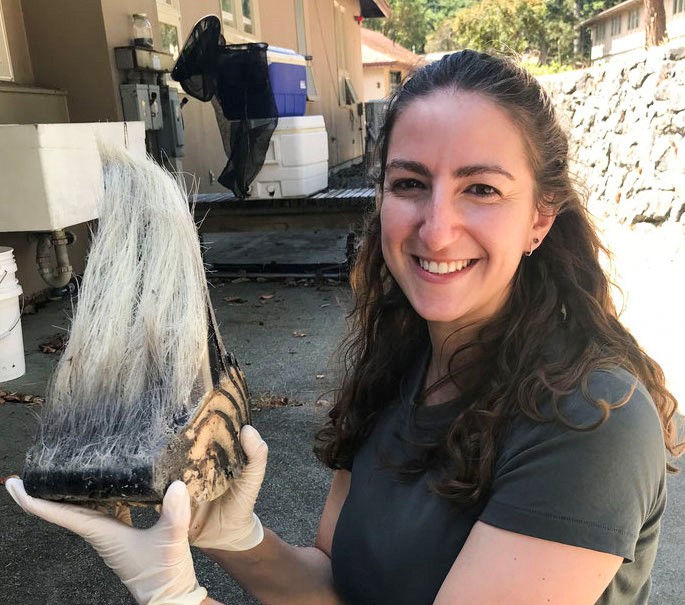When she was 9, Shirel Kahane-Rapport wrote a poem called, “I’m an Adventure Girl Who Loves Dolphins.”
A science nut who grew up near Toronto and loved being around water — she fondly recalls family vacations in Cape Cod — her poem would prove to be remarkably prescient about her career as a marine biology researcher who studies slightly bigger ocean dwellers:
Whales.
Kahane-Rapport, who earned a Ph.D. in biology from Stanford University and now is a postdoctoral scholar in the CSUF lab of Misty Paig-Tran, associate professor of biological sciences, is lead author of a recently published study in the journal Nature Communications on how much microplastics are being ingested by filter-feeding baleen whales.
In what is believed to be the first study to quantify the amount of tiny fragments of plastics being consumed by Earth’s largest mammals, Kahane-Rapport and her team of researchers estimate that blue whales consume up to 10 million pieces of microplastic every day — almost all from krill, its main prey, rather than from water itself.
“The implications of this, physiologically speaking, are just immense,” says Paig-Tran, who has mentored Kahane-Rapport since she came to CSUF in 2021 on a post-doctoral research grant.
The research paper, published Nov. 1, 2022, is based on work that began before 2016, when Kahane-Rapport started her doctorate program at Stanford’s Hopkins Marine Station — the oldest marine laboratory on the West Coast, in Pacific Grove.
She and her fellow researchers — from Hopkins, UC Santa Cruz, the Cascadia Research Collective in Olympia, Wash., and the National Oceanic and Atmospheric Administration Southwest Fisheries Science Center in Monterey — finished their numbers-crunching in 2021.
‘A human issue’
Microplastics pollution has been a big problem for decades, with plastic production and disposal projected to worsen through at least 2050, according to Kahane-Rapport’s research paper, “Field Measurements…
Read the full article here






